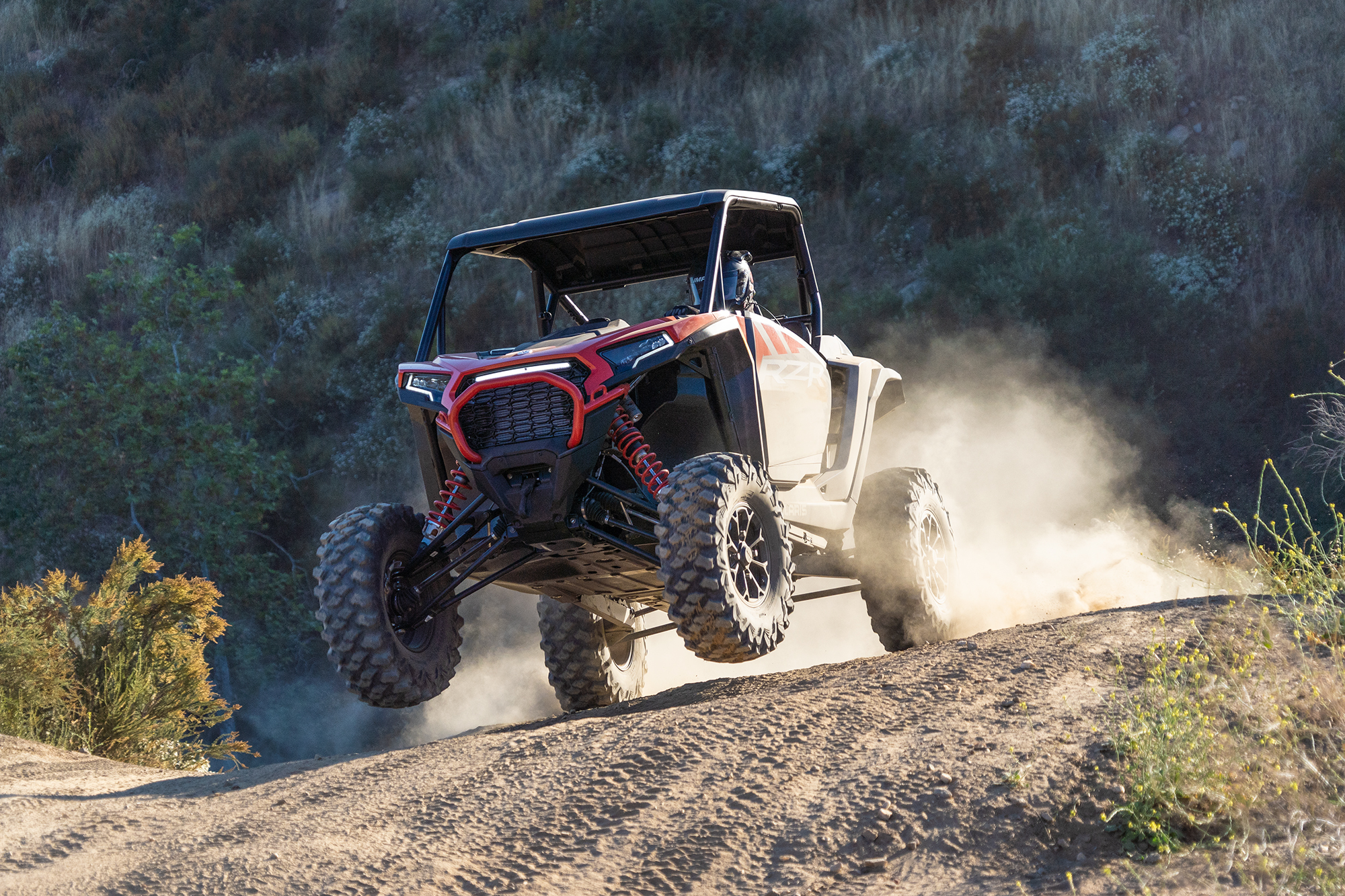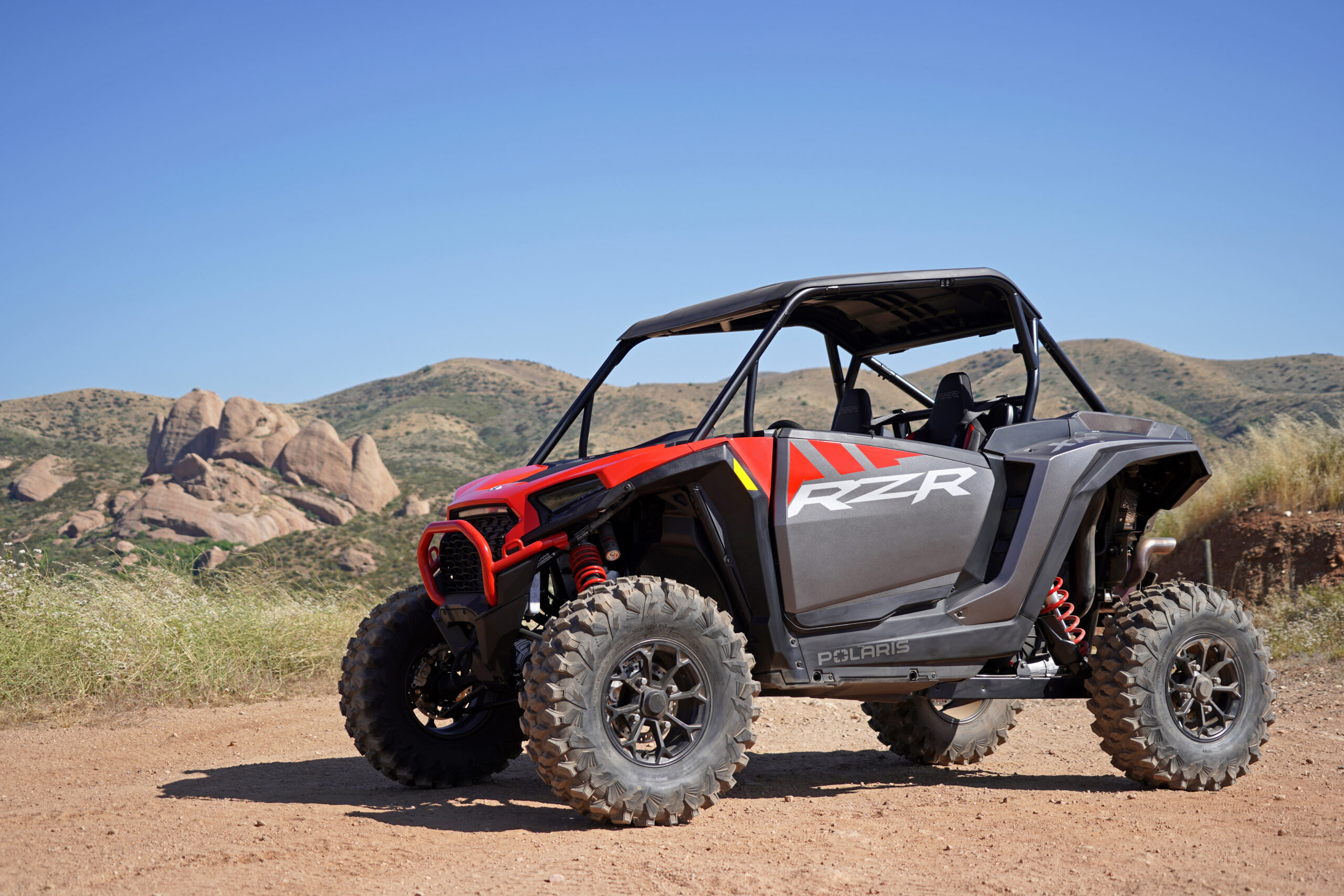2024 Polaris RZR XP 1000 Review
Competition:
The XP1000 has a ton of competition in both price and performance. The Kawasaki KRX 1000, Honda Talon 1000R/X, YXZ1000R SS, Maverick X3 DS Turbo, and Arctic Cat Wildcat XX are all aimed at the same full-sized Sport UTV customer, and they are all great cars. We have a ton of seat time in every one, and from our perspective, the 2024 RZR XP could have what it takes to be the best car in the class today. We are collecting test rigs as quickly as we can for some comparisons and back-to-back driving tests, as we really want to see how it stacks up against the competition, specifically the KRX1000. For what it is worth, the 2024 RZR XP Sport has a lower listed base price than all of its competition listed above. Expect to pay more for the electronics packages however. Its base price has only gone up $1,000, or 5% in the last ten years. That doesn’t even cover inflation!
Impressions:
From the first initial impression pulling it off the trailer to ripping it through a test loop we have been using since the RZR 800 came out, we found a lot to love about the new XP 1000. It has seemingly improved upon the outgoing car in just about every category from a driver’s perspective. The engine character is more refined, more robust down low, and seems to carry on longer.
The transmission engages more smoothly. The ride comfort is better, it handles sharper, is easier to drive fast, has more interior room, features, and better visibility. The chassis is noticeably stiffer and more responsive, the steering is sharper and more controlled, and the car is just overall easier to drive quickly and more fun to be in. It was a genuine shock to both of our testers that the car drives as well as it does – there is definitely some Pro R development DNA in it. The front-end precision is a big step up from the last XP.
It’s not all gravy, though, as we did find a few things to complain about. First, there are no adjustable throttle maps or modes. It would have been nice to see the RZR Pro drive modes make their way down to the naturally aspirated cars. The RZR is also fairly loud inside the cab. While the peppy 1000 sounds great, there’s a lot of exhaust, intake, and CVT noise in the cab that had us wishing for an intercom system.
The harnesses also could stand to be improved – they are stiff and uncomfortable, as well as hard to adjust due to the placement of the adjustment mechanisms in relation to where certain parts of the bodywork are in the RZR. A few times, our belt adjuster got wedged under the seat and refused to come loose unless we opened the door to fish it out. It also has a clumsy adjustment mechanism for the grab bar, which the aftermarket will likely remedy soon.
The last complaint is in regards to the engine braking. This has Polaris’ on-demand 4WD system, which means that their engine braking system typically locks up just the rear wheels when it engages, and it only engages if you stab the throttle when freewheeling. It can lead to some unpredictable behavior in really nasty downhill sections. This can be remedied by just trusting the brakes, but it is nice to know you have the engine braking as a backup, especially when other cars in this class do have far better engine braking performance.
Overall, this is a fantastic car, one that is incredibly fun to drive fast and offers a very wide performance envelope for the price. The RZR XP is a comfortable way to explore some of nature’s roughest terrain, and offers a reason for previous generation owners to upgrade if they really liked their XP1000. Well done, Polaris.
Want to drive one? Check out this link.
2024 RZR XP 1000 Ultimate Specifications
Engine & Drivetrain
Cooling: Liquid
Cylinders Displacement: 999 cc
Drive System Type: High Performance True On-Demand AWD/2WD
Engine Braking System (EBS): Not Equipped
Engine Type: 4-Stroke DOHC Twin Cylinder
Fuel System/Battery: Electronic Fuel Injection
Horsepower: 114
Transmission/Final Drive: Automatic PVT P/R/N/L/H
Dimensions
Bed Box Dimensions (L x W x H): 28 x 22 x 7 in (72.0 x 57.0 x 17.8 cm)
Box Capacity: 300 lbs (136 kg)
Estimated Dry Weight: 1642 lbs (744.8 kg)
Fuel Capacity: 9.5 gal (36 L)
Ground Clearance: 14.5 in (36.8 cm)
Hitch Towing Rating: N/A
Overall Vehicle Size (L x W x H): 120 x 64 x 74 in (304.8 x 162.6 x 188 cm)
Payload Capacity: 740 lb (336 kg)
Wheelbase: 90 in (228.6 cm)
Brakes
Front/Rear Brakes: 4-Wheel Hydraulic Disc with Dual-Bore Front Calipers and Single-Bore Rear Calipers
Parking Brake: Park In-Transmission
Tires/Wheels
Front Tires: Trail Master X/T 2.0 30 x 10-14 Radial Tire
Rear Tires: Trail Master X/T 2.0 30 x 10-14 Radial Tire
Wheels: Cast Aluminum
Suspension
Front Shocks: 2” Walker Evans® Needle Shocks with 16-Position Adjustable Clickers
Front Suspension: Dual A-Arm with Stabilizer Bar and 20.5 in (52.07 cm) Usable Travel*, 16 in (40.6 cm) of Wheel Travel
Rear Shocks: 2.5” Walker Evans® Needle Shocks with 16-Position Adjustable Clickers
Rear Suspension: Trailing Arm with Stabilizer Bar and 20.5 in (52.07 cm) Usable Travel*, 18 in (45.7 cm) of Wheel Travel




